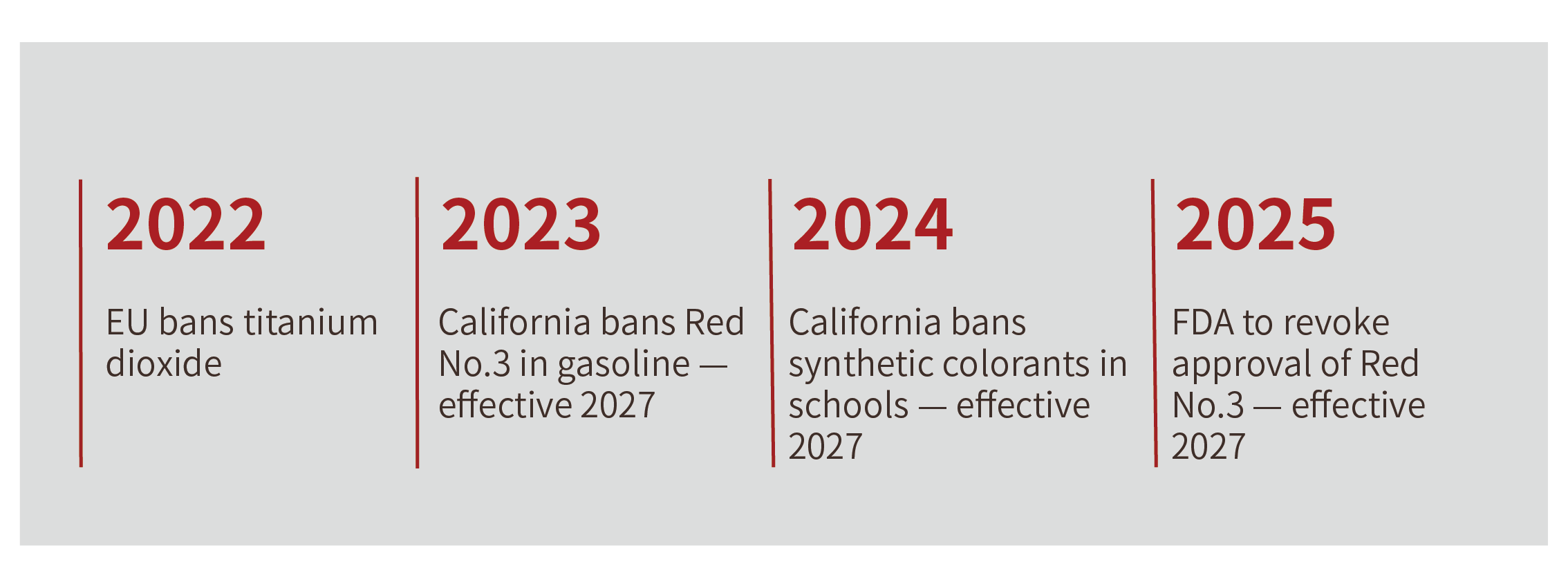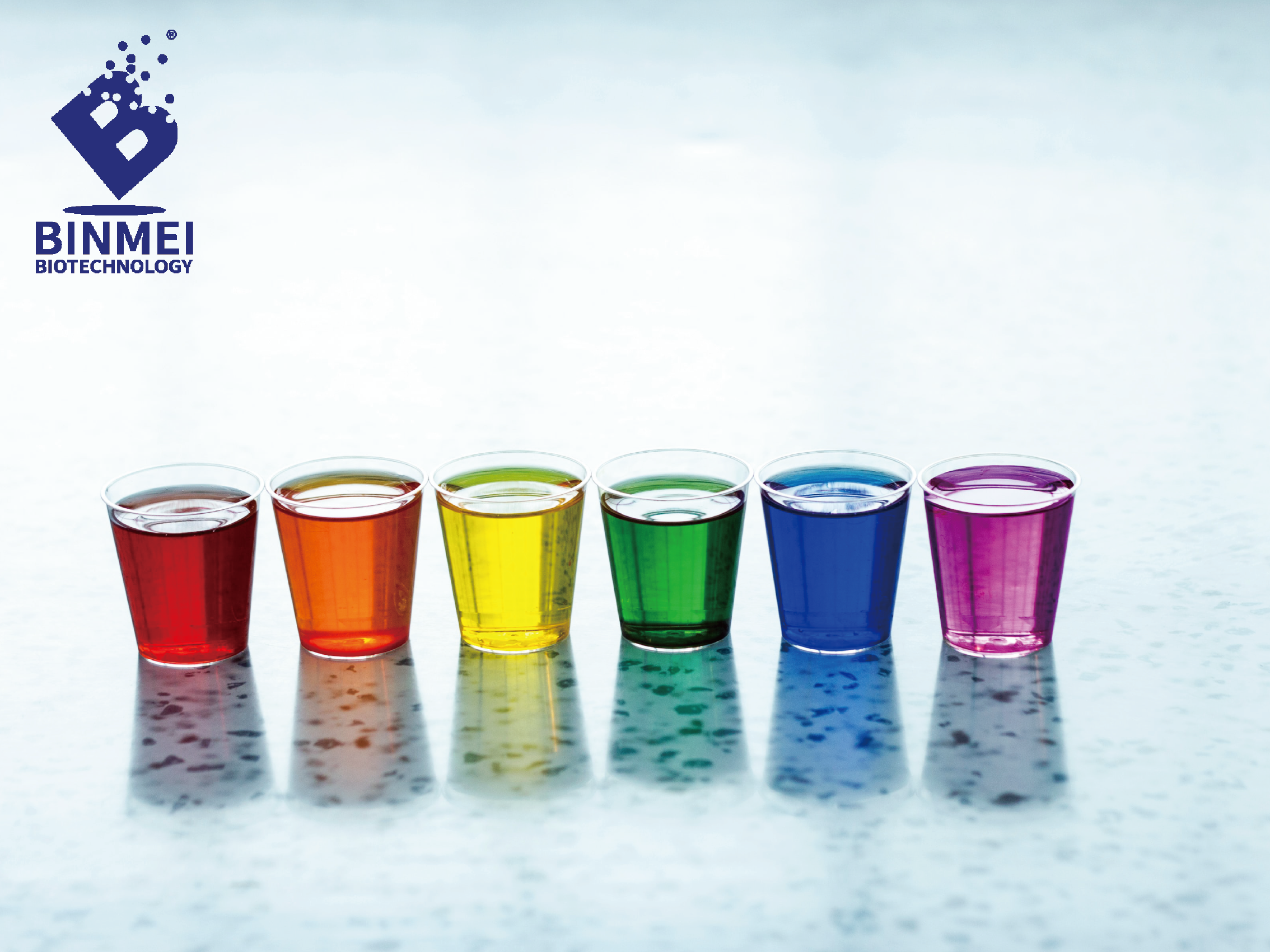Big Changes are coming: Natural colors replace Artificial colors in the food industry
WK Kellogg Co. has emerged as a pioneer, becoming the first major food company to sign a legally binding agreement. They will eliminate the use of petroleum-based artificial colors from their breakfast cereals in the U.S. by the end of 2027. And they will no longer roll out any new products with the artificial colors, marking a significant shift toward natural food colors.
What’s driving Major food companies to switch to natural colors ?

Since the start of the year, the FDA has announced a phase-out of several petroleum-based artificial colors from the U.S. food supply by the end of 2026. These include Blue Nos. 1 and 2; Green No. 3; Red No. 40; Yellow Nos. 5 and 6. There are concerns about their potential health risks of artificial colors, particularly for children, which has been a focus for Robert F. Kennedy, Jr., U.S. Secretary of Health and Human Services, and the FDA’s phase-out plan has further accelerated the industry’s transition to natural colors.
The transition towards natural colors is far from random. With RFK Jr.’s announcement to phase out artificial colors by 2026, major industry giants like WK Kellogg, General Mills, Kraft Heinz, and Nestlé are already reformulating their product lines and will phase out artificial colors from their products by the end of 2027, demonstrating a powerful voluntary commitment to healthier food formulations.
Current Movements among Food Industry Leaders
Here’s what’s happening RIGHT NOW in the food color market trends :
- General Mills announced that it plans to remove artificial colors from all of its U.S. cereals and all foods served in K-12 schools by the summer of 2026. The company aims to eliminate the artificial colors from its full U.S. retail portfolio by the end of 2027.
- Nestle said it will remove artificial colors from its U.S. confectionery and beverage products by the middle of 2026. The move has broad support.
- Mars, known for colorful candies, has committed to begin offering M&M’s Chocolate, Skittles Original, Starbursts Original fruit chews, and other iconic candies with natural food colors starting next year.
- Kraft Heinz has set a clear target to stop using FD&C artificial colors on their products sold in the United States. They have found more natural plant-based colors as alternatives to substitute them before 2027 ends, and reports that almost 90% of its U.S. food products don’t contain these artificial coloring anymore, with plans they instead use natural colors for the products.
This situation, by industry giants, not only reflects the growing pressure on brands to prioritize consumer health and clean-label food color ingredients, but also further reinforces the market trend of natural colors as an artificial food color replacement.

Challenges and Solutions in Adopting Natural Food Colors
Despite the progress, switching from artificial food colors to natural food colors is not simple. Study after study has shown that if all food companies were to remove synthetic colors from their formulations, companies face significant technical challenges:
What Matters: pH, Light, Heat
Natural food colors are notoriously difficult to work with, including being subject to changes related to acidity, heat stability, and light sensitivity, and offer a narrower range of hues.
Brightest Hues, Biggest Challenges
One of the most significant challenges is sourcing a stable natural blue food color. There aren’t many natural sources of blue pigment, and maintaining color integrity during processing is difficult.
For instance, when General Mills attempted to remove artificial colors from Trix cereal, its once-bright red, yellow, and purple puffs turned dull and muted, while key blue and green shades (which rely on natural blue food color and natural green food color) vanished entirely.
To tackle these challenges, the industry is actively exploring innovative solutions.
For example, some companies are developing heat-stable natural colors through technological advancements to enhance the stability of natural colors under high-temperature processing conditions. At the same time, research on expanding the sources of natural colors is also in progress, such as by creating more efficient extraction methods from fruits, vegetables, spices, and minerals, to broaden the color range of natural colors.

Binmei’s Role as a Natural Color Solution Provider
As a specialized manufacturer of high-quality Spirulina Extract and a wide range of natural food colors, Binmei offers sustainable natural color solutions tailored to modern food and beverage applications.
Binmei products are known for
– Customized solutions and service tailored to specific requirement
Binmei natural food colors offer liquid and powder (water- soluble) color solutions.
- Binmei Liquids: Versatility, ease of use, and highly soluble, ideal for beverages and liquid-based formulations.
- Binmei Powder: Confidence for dry mixes, bakery, and seasoning, allows for long shelf life and stable performance in dry applications.
We partner closely with you to select the optimal natural color solution — tailored for stability, visual appeal, and cost-efficiency- ensuring it aligns perfectly with your product characteristics and market positioning.
– Advanced Pure Physical extraction technology ( Only using water as the solvent )
Binmei Blue Spirulina: Creates vibrant blue shades from celestial to marine, adding fresh or profound visual appeal to products.
Binmei Butterfly Pea flower extract(an FDA-approved natural blue food color ): offers vibrant colors with excellent light & heat stability, and alongside stability across a broad pH range (2.5-8).
Binmei’s natural red food colors, based on anthocyanins, offer pH -pH-dependent shades (stable pH 2-7) , naturally shifting from red to purple as pH changes.
– FSSC 22000 Certified Factory with a fully Transparent & Traceable System from Raw Material to terminal consumers
In response to growing regulations’ pressure and consumer demand for clean label products, forward-thinking food and beverage companies are proactively preparing for a future without synthetic food colors. Natural food colors – derived from sources like fruits, vegetables, spices, and minerals- are rapidly replacing synthetic alternatives as the preferred choice among both consumers and food manufacturers.
The question is no longer if you’ll need to transition, but whether you’ll LEAD the change or GET LEFT behind.
These challenges also present opportunities for innovation. Companies that successfully navigate reformulation can differentiate themselves in the market, strengthen consumer trust, and align with broader sustainability goals.
Engaging with ingredient suppliers early on, coupled with early-stage trials for product reformulation, will be essential to ensure a steady supply of ingredients and prevent expensive delays.

Previous Post
Is it Safe to use Spirulina Extract? Things About Extraction & Health Effects
Leave a Reply
You must be logged in to post a comment.
